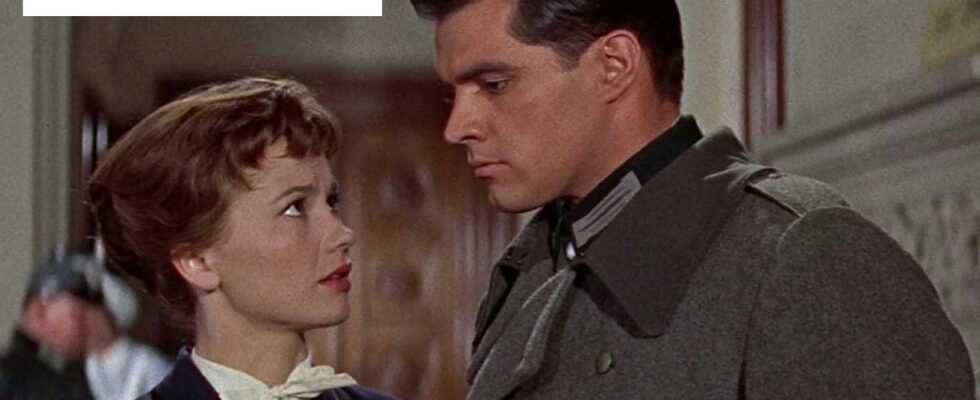An absolute masterpiece by the master of melodrama, Douglas Sirk, “A Time to Love and a Time to Die” is a heartbreaking and intense film about the madness and absurdity of war. And Sirk’s reason for making the film is poignant…
The Time to Love and the Time to Die, released in 1959 in France, is often considered by many moviegoers to be the acme of Douglas Sirk’s melodramatic period; who had signed in this register the equally flamboyant All that the sky allows and Written on the wind, in 1955.
The film is adapted from the work of one of the greatest post-World War I writers, the German Erich Maria Remarque (who also plays the role of the history teacher in the film), whose works will be banned by Joseph Goebbels, the Propaganda Minister of the Third Reich. Mobilized on the front in 1916, seriously wounded in 1917, he was a convinced pacifist all his life, in the same way as his French counterpart, the no less famous Roland Dorgelès, author of wooden cross. Erich Maria Remarque wrote A time to live, a time to die in 1954, also published in France under the title The Island of Hope.
The plot takes place in 1944, in a Nazi Germany already largely under the bombs of the air raids of the Allies. Ernst Graeber (wonderful John Gavin), a young German soldier witnessing the horrors of war on the Russian front, returns to his hometown for a few days of leave. He discovers his house destroyed by bombs and goes in search of his missing parents.
To help him in his quest, he seeks advice from Elizabeth, whose father, a political opponent is a prisoner of a concentration camp, and Oscar Binding, a fellow Nazi party district chief. The trio will try to keep a semblance of reason by surviving in a world in ruins, nourished by hatred, madness and death…
A painful introspection and catharsis
“I never believed in Germany in wartime as much as I saw this American film shot in peacetime” wrote Jean-Luc Godard a year before signing A bout de souffle, in a famous review published in the Cahiers du cinema in April 1959; explaining that Time to love and time to die was certainly his favorite work at Douglas Sirk.
The desire to make this film is also linked to an intimate and painful drama for Sirk, who had been forced to flee Germany in December 1937 because he refused to collaborate with the Nazi regime. In 1957, he returned to Germany, his native land, to direct his melodrama in Eastmancolor and produced by Universal. It’s a personal quest coupled with a catharsis for him.
The filmmaker was indeed haunted by the tragic fate of his son, born of a first marriage. His first wife, a fanatical Nazi activist who had been committed to the ideas of National Socialism since 1927, had enlisted his son, Klaus Detlef, partly out of revenge against Sirk, whose second wife was of Jewish origin. Sirk’s son was probably reported missing on the Russian Front in the spring of 1944 and then pronounced dead.
“Sirk transformed The Time to Love and the Time to Die […] into an imaginary reconstruction of her son’s final weeks, and projected into them her anguish — and her hope — and her despair. After the war, the director made an unsuccessful attempt to return to work in Europe. He spent a year trying to find out what had happened to his boy, following leads and inspecting report cards.” said the British historian Jon Halliday, author of a reference book devoted to the filmmaker, Conversations with Douglas Sirkpublished in 1971 but only in 1997 with us.
Ill, Sirk could not finish editing his film. It was Bob Arthur, the film’s producer, who took charge of it, following the filmmaker’s instructions. Skillfully blending history, melodrama and painful personal reflection, Time to love and time to die is not to be missed under any circumstances, this evening on Arte.
